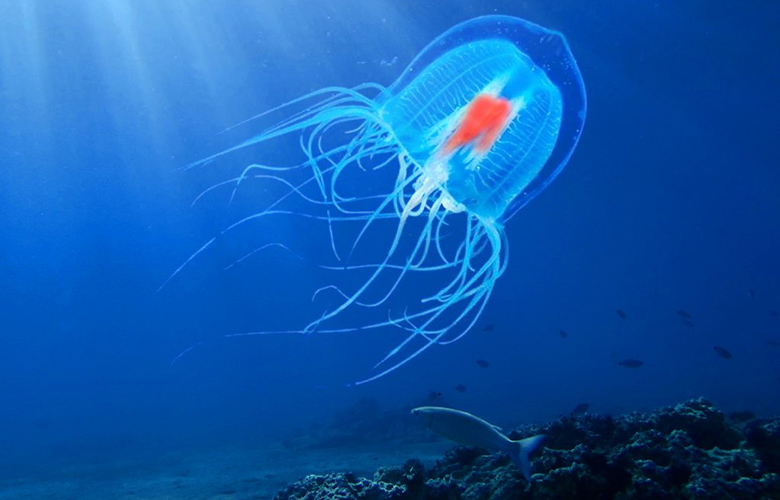
Mapping the genome may lead to discoveries that will improve our mortal lives
A team of scientists in Spain has managed to map the genome of a jellyfish known for its ability to cheat death with successive rebirths.
The tiny sea creature, dubbed the immortal jellyfish, can turn back its biological clock and return to a mass of youthful cells — even after sexual reproduction, the Wall Street Journal reports.
Once restored to its juvenile state, the jellyfish can also reproduce promiscuously by cloning polyps of itself, essentially having two ways to multiply its genetic material.
In a study published Monday in the Proceedings of the National Academy of Sciences, the authors said they hope that mapping the genomes of these creatures could lead to discoveries about human aging and efforts to extend human life.
Marine biologist Maria Pascual Torner, one of the authors and a postdoctoral researcher at the University of Oviedo in Spain, where the research was conducted, explains that the mechanisms of rejuvenation were put under the microscope.
"It is a mistake to think that we will have immortality like this jellyfish, because we are not jellyfish," he clarifies. But it's possible that something of the immortal jellyfish's evolutionary trick could be used to better understand the pathologies of aging, he said.
Many types of cnidarians, or jellyfish, have some "age-reversal" ability, but most lose that ability with sexual maturity, the study said.
Three types can regenerate after adulthood, and of these three, only Turritopsis dohrnii retains its ability at 100%.
One of the team's biggest challenges was finding some of the jellyfish in the ocean, since they are the size of a tiny needle. They finally made it off the Italian coast, as Dr. Pascual Torner. The scientists compared the genome mapping of T. dohrnii to that of a closely related species that lacks any known ability for post-reproductive regeneration.
The results revealed key molecular mechanisms behind the immortal jellyfish's reanimation, the study says. The research suggests that T. dohrnii is potentially better at repairing and replicating its DNA and maintaining its stem cells.
Dr. Jan Karlseder, a molecular biologist and director of the Glenn Center for the Biology of Aging Research at the Salk Institute, said the study carries an important message about extending the years an organism remains generally healthy.
"The most interesting thing is that it is not a single molecular pathway. It's a combination of many of them," he said. "If we want to look for a lifespan extension, we can't just focus on one pathway. This will not be enough. We have to look at a lot of them and how they work together."
Biological immortality does not protect jellyfish from predators such as sea snails, crustaceans and marine worms.
"The fate of everything in the ocean in general is to get eaten at some point," said Monty Graham, professor of biology and director of the Florida Institute of Oceanography.
The T. dohrnii jellyfish usually hits the reset button when it wants to avoid death caused by environmental factors, the professor says.
When adult jellyfish feel threatened by changing conditions, they turn back their genetic clock to become larvae again.
Resuming their younger form - a thin layer of cells and tissue - they wander the ocean looking for something to cling to, such as a rock or a sheet of sea grass.
In the study, the scientists evaluated whether the regenerated cells could differentiate into any cell type of the jellyfish in question, such as nerves and muscles. The ability of an early cell type to be pluripotent, that is, able to develop into any cell type the jellyfish needs, is at the core of regeneration, said Dr. Graham.
In humans, stem cells are considered pluripotent, however, much work still needs to be done before any link between the immortal jellyfish's rejuvenation process and human aging can possibly be made.
Once a larva finds a place, it morphs into a polyp that clones itself, creating a colony of polyps. When conditions are right, the colony multiplies and produces new jellyfish



No comments:
Post a Comment